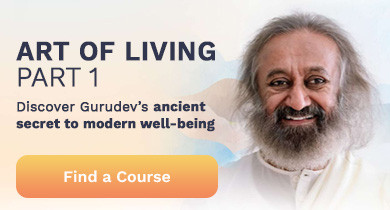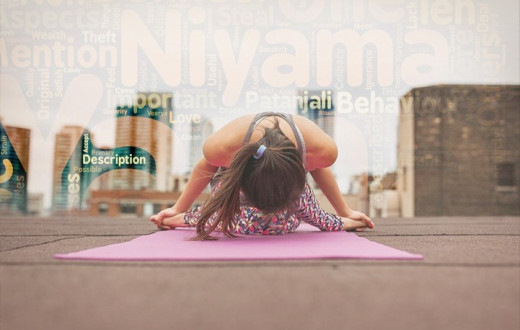By Shalini Parekh | Posted: December 23, 2018
Increasingly, the practice of Asana, or the physical poses we understand as yoga, is being alienated from the very source of its conception; its moral, ethical, and philosophical reasons and foundation. Perhaps this is because the modern practice has separated the metaphorical wrapping paper from the gift itself, interchanging the two and taking the wrapping paper instead of the gift.
Most practitioners of Yoga have heard of the eight limbs of yoga: Yamas, Niyamas, Asana, Pranayama, Pratyahara, Dharana, Dhyana, and Samadhi. These eight limbs are integral to one another: they are neither dispensable nor separable. Why, then, does Asana remain the centerpiece of the modern experience of yoga? Why are they understood as a progression on the path of yoga, when in fact they are a composite and part of an organic whole?
1. Yamas
The five Yamas are as follows: Ahimsa, or non-violence, Satya, or truth, Asteya, or non-stealing, Brahmacharya, or moving in Brahman (infinity), and Aparigraha, or non-accumulation. These five principles are universal in nature, without exception. An intrinsic part of human values and an ethical code of conduct. The understanding of, and more importantly, incorporation of them, changes the entire texture of our physical practice.
2. Niyamas
Niyamas can be understood as the cultivation of the self. There are five Niyamas: Shaucha, or physical purity, Santosha, or contentment, Tapas, or endurance, Swaadhyaaya, or self-study, and Ishwara Pranidhaana, or devotion to the Divine.
3. Asana
Asana is widely understood as the totality of yoga. The Yoga Sutras define Asana as that which is steady and comfortable. Again, in the words of Guru Sri Sri Ravi Shankar, “Feeling the body, letting go of the effort, and experiencing the infinity is Asana.”
4. Pranayama
In Pranayama, we understand the dimension of the breath. Various Pranayama techniques are outlined by Patanjali in the Yoga Sutras. At a fundamental level, the inhalations and exhalations are controlled in a certain rhythm or pattern. A good example of this is the Sudarshan Kriya breathing technique taught by Art of Living that has helped bring greater mental clarity and physical well-being to millions around the world. Patanjali has stressed that Pranayam should be explored with proper guidance, as they thin down the curtain around the light – prakash avanaram.
5. Pratyahara
Pratyahara is the inner canvas, the reference of the inner world and the coaxing of the senses to withdraw inward. It is fundamental to cultivating a practice that is not thrown off by the external fluctuations of the body, the senses, and the circumstances. Various guided meditations are helpful to invite the mind to dive inwards.
6. Dharana and 7. Dhyana
Dharana and Dhyana are sometimes thought of as interchangeable. While meditation has become popular even outside the realm of yoga, the concept of Dharana, which is the singular pointed the attention of meditation, was prescribed by a teacher in accordance with the needs of the individual and his or her progress on the path of yoga. Dharana and Dhyana are intimately tied to Pranayama, a good example of why no limb of yoga is separate from the other.
8. Samadhi
Samadhi, or the state of ultimate bliss, as long been considered too lofty a goal for the common man. This eliminates the opportunity for us to blossom on the path of yoga. Every moment that we feel one with the infinite self is one of Samadhi.
What is truly profound is astoundingly simple. When our experience is clouded, our understand is blurry as well. If your only experience of yoga is sweating in a hot room, then the opportunity for a deeper experience and understanding diminishes. The gift of yoga is the opportunity to experience the whole being, not just the body. Why settle for less?
According to Yogi Krishan Verma, director of Sri Sri Yoga Trainings at the Art of Living Retreat Center, “You are more than just the body.”
While this may sound like a lofty goal, in experience, it is simple and brings a seismic shift to the way we practice. At the basic level, when the emotions are clouded or the mind is scattered, the body reflects that as well. The body and the physical practice is just one limb of yoga. Why would we take the part as the whole?
When we move through the eight limbs of yoga as a dynamic whole, the practice parts to reveal our true self. All conflict and duality shifts to illuminate the light that we are. As explained by Guru Sri Sri Ravi Shankar, “When a body develops, the whole body develops together. Simultaneously all the aspects, all the limbs of the body develop.” The eight limbs of yoga are just that – limbs in the body of yoga. This realization is a gift that
we unwrap with a sense of awe and wonder!
Originally published on the blog of Art of Living Retreat Center.
Shalini Parekh has taught yoga in the Chicago area for almost 20 years. She believes that you teach best what you need to learn the most and is passionate about bringing the nuances of ancient yoga philosophy to the forefront of modern yoga practice. She is also a journalist and writes about issues of identity, culture, and politics.





























